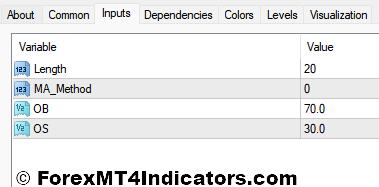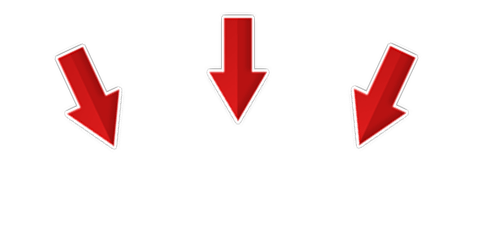||
Have you ever felt like you’re deciphering a cryptic message when staring at your MT4 charts? You see the price wiggling up and down, but gauging its overall sentiment – is it overheating or ready for a rebound? can be a head-scratcher. Thankfully, the world of technical analysis offers tools to shed light on this very dilemma. Enter the realm of overbought/oversold indicators, your trusty companions in navigating market sentiment within the popular MT4 platform.
This comprehensive guide dives deep into the world of overbought/oversold indicators for MT4. We’ll crack the code on identifying market extremes, explore the limitations of traditional indicators, and empower you to build a more effective tool for your trading arsenal. Buckle up, and get ready to transform your understanding of market sentiment!
Unveiling Overbought and Oversold Conditions
Imagine the stock market as a pendulum swinging back and forth. When it reaches the peak of its swing, it’s considered overbought. This signifies a market where prices have potentially risen too quickly, and a correction (price decrease) might be on the horizon. Conversely, when the pendulum reaches its lowest point, it’s considered oversold. This suggests that prices may have fallen excessively, and a potential rebound could be brewing.
But how do we, as savvy traders, recognize these overbought and oversold conditions? Here’s where overbought/oversold indicators come into play. These technical analysis tools analyze price movements and generate signals to indicate when the market might be nearing its extremes.
Demystifying MT4 Indicators
MT4, or MetaTrader 4, is a widely used trading platform that offers a treasure trove of technical analysis tools. Overbought/oversold indicators represent a prominent category within this arsenal. Some of the most popular MT4 indicators in this domain include:
- Relative Strength Index (RSI): This indicator measures the momentum of recent price movements, with readings above 70 generally considered overbought and below 30 considered oversold.
- Stochastic Oscillator: Similar to the RSI, the Stochastic Oscillator gauges market momentum by comparing the closing price to the price range over a specific period. Readings above 80 are often seen as overbought, while readings below 20 suggest oversold conditions.
These indicators provide valuable insights, but it’s crucial to remember that they’re not crystal balls. Let’s delve into the limitations we need to be aware of.
Limitations of Traditional Indicators
While overbought/oversold indicators offer a helping hand, they’re not without their shortcomings. Here are some key limitations to consider:
- False Signals and Whipsaws: Imagine getting a “fire sale” alert, only to see prices continue plummeting. This is the reality of false signals. Market volatility can trigger these misleading indicators, leading to missed opportunities or costly trades.
- Market Volatility and Indicator Accuracy: Indicators often struggle in highly volatile markets. Rapid price swings can cause these tools to churn out erratic signals, making them less reliable during turbulent market conditions.
- The Inherent Subjectivity of Overbought/Oversold Levels: The specific thresholds for overbought and oversold zones (e.g., RSI above 70) can be subjective and depend on the market and timeframe being analyzed. What might be considered overbought in a calm market could be a normal reading during a volatile period.
These limitations highlight the need to go beyond the basic indicators and explore ways to craft a more robust tool.
Crafting a Better Indicator
The beauty of MT4 lies in its customizability. Here’s how you can leverage this feature to build a more effective overbought/oversold indicator:
- Combining Multiple Indicators for Enhanced Signal Strength: Don’t put all your eggs in one basket! By combining different indicators, like RSI and Stochastic Oscillator, you can create a confluence of signals that offer a more robust picture of market sentiment.
- Exploring Custom MT4 Indicator Development: For the truly adventurous, MT4 allows you to develop custom indicators using scripting languages like MQL4/MQL5. This opens doors to creating highly personalized tools tailored to your specific trading strategies and market conditions.
- Utilizing Volatility Filters for Context-Specific Signals: Remember how volatility can throw traditional indicators off? Volatility filters can be incorporated into your custom indicator to account for market turbulence, providing more relevant signals during different market phases.
By strategically combining these elements, you can craft a more reliable indicator that reflects your unique trading style and risk tolerance.
Advanced Techniques
There’s a hidden gem waiting to be discovered within the world of overbought/oversold indicators – divergences. This concept goes beyond simply looking at an indicator’s reading. It involves comparing the indicator’s movement with the price action on the chart. Here’s what you need to know:
- Recognizing Bullish and Bearish Divergences: Imagine a scenario where the price keeps making new highs, but the RSI indicator fails to follow suit and starts forming lower highs. This is a bearish divergence, hinting that the price momentum might be weakening, and a potential reversal could be on the cards. Conversely, a bullish divergence occurs when the price makes lower lows, but the RSI forms higher lows, suggesting a possible buildup of buying pressure and an imminent price increase.
- Divergence as a Leading Indicator for Trend Reversals: The beauty of divergences lies in their ability to act as leading indicators. By identifying these discrepancies between price and indicator movement, you can potentially anticipate trend reversals before they happen, giving you a valuable edge in your trading decisions.
- Confirmation Strategies for High-Probability Trades: While divergences are powerful tools, they shouldn’t be used in isolation. Always look for confirmation from other technical indicators or price patterns before pulling the trigger on a trade based solely on a divergence signal. This could involve using support and resistance levels, moving averages, or volume analysis to strengthen your trade conviction.
Backtesting and Refinement
Building a better overbought/oversold indicator isn’t a one-time shot. It’s an ongoing process that requires refinement. Here’s how backtesting can help:
- The Importance of Backtesting in Indicator Development: Backtesting involves applying your custom indicator to historical price data to assess its performance. This allows you to see how the indicator would have behaved in different market conditions and identify any shortcomings.
- Historical Data Analysis and Parameter Optimization: By analyzing the backtesting results, you can fine-tune the parameters of your indicator (e.g., RSI thresholds, moving average periods in a custom indicator). This iterative process helps you optimize your indicator’s performance for the markets you trade.
- Integrating the Improved Indicator into Your Trading Strategy: Once you’ve backtested and refined your indicator, seamlessly integrate it into your overall trading strategy. Remember, no single indicator is a guaranteed path to success. Use your improved indicator alongside other tools and risk management techniques to make well-rounded trading decisions.
- Backtesting is an invaluable tool for ensuring your custom indicator is a valuable addition to your trading arsenal.
How to Trade with Custom Overbought/Oversold Indicator
Buy Entry
- Signal: Look for a bullish divergence. This occurs when the price makes lower lows on the chart, but your indicator forms higher lows.
- Confirmation: Combine the divergence signal with a supportive price pattern, such as a double bottom or a bullish engulfing candlestick.
- Entry Price: Enter the trade slightly above the recent swing high after the confirmation signal appears.
- Stop-Loss: Place your stop-loss order below the recent swing low that preceded the bullish divergence.
- Take-Profit: Set your initial take-profit target at a level that coincides with a resistance level or a predetermined risk-reward ratio (e.g., 1:2).
Sell Entry
- Signal: Look for a bearish divergence. This occurs when the price makes new highs on the chart, but your indicator forms lower highs.
- Confirmation: Combine the divergence signal with a resistance level or a bearish candlestick pattern, such as a head and shoulders or a bearish engulfing candle.
- Entry Price: Enter the trade slightly below the recent swing low after the confirmation signal appears.
- Stop-Loss: Place your stop-loss order above the recent swing high that preceded the bearish divergence.
- Take-Profit: Set your initial take-profit target at a level that coincides with a support level or a predetermined risk-reward ratio (e.g., 1:2).
Better Overbought Oversold Indicator Settings

Conclusion
The journey of building and utilizing a custom overbought/oversold indicator equips you with a powerful tool to navigate market sentiment within the MT4 platform. Remember, this is just the first step. As you gain experience, you can continuously refine your indicator and integrate it seamlessly into your trading strategy. This guide has provided you with the knowledge to explore indicator customization, identify hidden divergences, and leverage backtesting for optimization.
Recommended MT4/MT5 Broker
XM Broker
- Free $50 To Start Trading Instantly! (Withdraw-able Profit)
- Deposit Bonus up to $5,000
- Unlimited Loyalty Program
- Award Winning Forex Broker
- Additional Exclusive Bonuses Throughout The Year
- Exclusive 50% Cash Rebates for all Trades!

>> Sign Up for XM Broker Account here with Exclusive 50% Cash Rebates For All Future Trades [Use This Special Invitation Link] <<
Already an XM client but missing out on cashback? Open New Real Account and Enter this Partner Code: 𝟕𝐖𝟑𝐉𝐐
(Free MT4 Indicators Download)

Better Overbought Oversold MT4 Indicator
||
-----------------------------------------------------
By: Tim Morris
Title: Better Overbought Oversold MT4 Indicator
Sourced From: forexmt4indicators.com/better-overbought-oversold-mt4-indicator/?utm_source=rss&utm_medium=rss&utm_campaign=better-overbought-oversold-mt4-indicator
Published Date: Sat, 17 Aug 2024 01:00:38 +0000
Read More
.png) InvestingStocksToolsClubsVideosPrivacy PolicyTerms And Conditions
InvestingStocksToolsClubsVideosPrivacy PolicyTerms And Conditions
